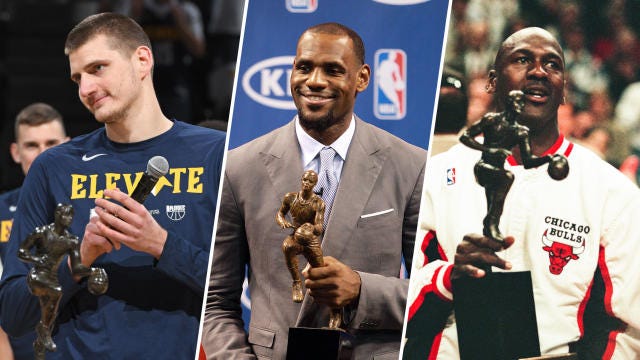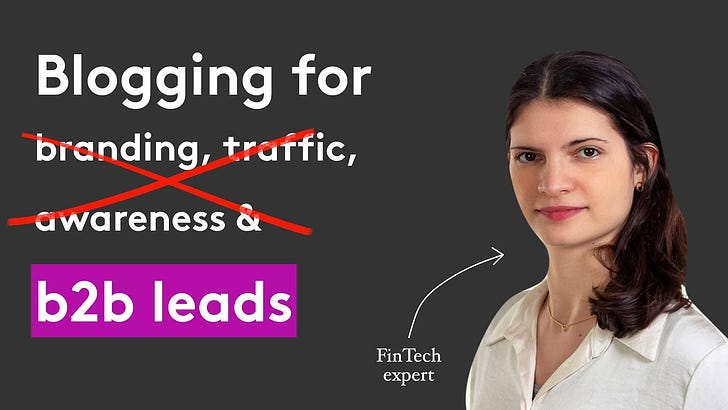Welcome to the new joiners. I’m George, from Orama a content studio that helps Β2Β brands grow with podcasts. The September sprint continues with a critical question:
Listen to the podcast, read the edited transcript below, or watch the video for a visual bonus.
How do you start a podcast?
How do you start a podcast? That’s the question I get asked the most.
It's coming from brands and individuals alike. And although it looks simple, it hides multiple layers. It's a bit like: how do I launch a website? or a business?
My answers so far have been perfectly accurate but largely ineffective.
I want to solve this here.
For podcasts, I think you can break the original question into three:
What are the practicalities of launching a podcast?
How do I build and sustain a podcast that will elevate my brand, differentiate from competitors and generate returns?
How do I get started and test it out?
A practical answer
You can go to Wix, Squarespace, or whatever, create an account and create a website.
For a business, in the UK at least you can register a company with a few documents and £50.
And for the podcast equivalent you need two things, assuming you already have a computer.
A microphone because otherwise, your sound recording will be of poor quality. You're exposing yourself to a lot of background knowledge and other issues.
A podcast hosting platform: multiple options are available on the web, and many are free. I'd recommend, starting with Spotify for podcasters. You can also use Substack, where this podcast is hosted. Both are free and you can load your audio files there.
Follow the brand podcast checklist for the other details: TL;DR: logo, blurbs, etc.
You’re all set! Your audio files will be distributed via RSS feeds across platforms.
A comprehensive answer
In reality, people want a website that showcases their offer, attracts traffic, etc.
They want to create a business that generates some kind of value.
A podcast that can sustain itself and bring some sort of satisfaction through the host or benefits as a business.
Then there are answers but they get much more complicated.
Maybe a good way to create a website is: to gather all the content; create a wireframe; use a template. That’s for a simple version. Or maybe find the right agency that will do everything for you.
For a business, it can be infinitely complex. Make a business plan. Find customers. Build a product. All that sort of thing.
They require significant effort and investment, even if it’s just time, upfront.
The podcast equivalent is not that complicated, but it also benefits from careful preparation and creative thinking.
We've created a document as a guide: the B2B Show Bible template. (I call it “show” not “podcast” on purpose).
It is a very useful guide if I say so myself.
It helps to launch a podcast that sustains itself, makes it easy to book guests, and to differentiate. And links to the end results (not just podcast metrics) they want to achieve.
We use it with clients to guide them through their launch. But it implies commitment, professional assistance, and a minimum personal investment. It only makes sense if the brand wants to create a series of episodes, say at least one per month for six months.
But… You may not feel confident if this is going to work for you. And, if you will be able to sustain it. And that's where I think we need the third and differentiated approach. The idea would be to try it out. Figure out what it implies until you're fully ready to commit. In particular for scale-ups.
If you’re a large business, this may be just a small line on your budget.
If you’re a startup founder, you can nimbly drive this.
The need for a third answer
But it’s harder if you’re somewhere in between, a scale-up.
You’ll be using resources:
Brainstorming the name of your podcast alone could take hours. If you need a logo and copy, you’d need to raise tickets to your design and copywriting teams, and so on.
It creates pressure.
You have to deliver something meaningful: ship many episodes and prove the value to the company.
That’s a cold start problem.
But you can also see it from a different angle.
You simply want to have a conversation with someone and share it with others. That's what we typically understand as a podcast.
Maybe it's just insight from one of my colleagues, your CEO, or the executive team, who’s got something interesting to share.
Maybe you’re going to have this conversation anyway, and people will benefit from it. Or you have an opportunity to chat with a client. And it would be great if prospects could hear what they have to say. But you don't have plans for 6 episodes.
For all those challenges the Minimum Viable Podcast (MVP) can be a solution.
The Minimum Viable Podcast
The name is inspired by The Lean Startup, an influential book by Eric Ries. I learnt from Google’s AI that it was coined by Frank Robinson. Here are a couple more key points (from Gemini):
The minimum viable product (MVP) is a version of a product that's simple enough to sell to the market, but still has enough features to attract early customers. The MVP is a key technique used to validate a product idea and learn from customers early in the development process
The MVP's purpose is to test a business idea at a low cost, and to learn from customers so that the product can be improved.
You can substitute Product for Podcast and you got the idea.
I would also like to offer a different perspective, heard at The Podcast Show, from someone at BBC Sounds. The podcast arm of the almighty BBC:
Podcasts never land perfect(!).
That's striking because the BBC, are pretty knowledgeable about podcasts or creating shows, they have a big talent pool, experience producers, user data, etc. Yet they also tweak the podcast after the launch.
NOTE
Before we get to what this MVP looks like there’s one thing you need to know:
A podcast is fully editable. And that can make the approach very different from the website and/or business comparison used earlier. That means you can change all the elements, even after they’ve been published (it’s part of the beauty of the old-school RSS feed). Make the changes on your hosting platform and they will feed to Apple, Spotify and wherever you syndicate it. You can also replace an episode.
To some extent websites, and businesses can also be edited or pivoted, but it’s more complex than just overwriting something new.
But you can be even leaner than that.
You don’t need a syndicated podcast. You can start with an audio post. It’s an option, here, on Substack. The process is identical to a podcast: you upload an audio file.
You don’t need Substack. An audio file can also be posted on any website or included in an email. But if you’re starting from scratch, the value is mostly in the transcript which you can create with tools like Otter and many others - they multiply on the web. (Please do NOT transcribe manually, it’s not worth your time.) Now you have the draft of a blog post or newsletter.
If you record a video, you can post the whole conversation, or create clips for social media. Even if you didn't record a video, you can create one with an animated transcript.
Then use your existing email database, website, and social media, to distribute it. After you've done that a few times, you’ll be in a better position to answer the questions: Should we continue? Do we want to have regular public conversations? Can we commit to monthly episodes?
And then those audio posts can be uploaded as your first podcast episodes.
What does an MVP look like?
You’re reading/listening/watching to my Minimum Viable Podcast. Although this episode is syndicated on podcast platforms and on YouTube. I’m still at this stage where I am thinking of tweaking the format, the branding, and I allow myself to make mistakes. At least I won’t hit my head against the wall if I do. And I sure did last week when I included a video from the Olympics on my YouTube channel. Of course, it got blocked. What was I thinking? The thumbnail was also wrong. (But no big deal. It’s fixed.)
This is my minimum viable podcast. I’ve got other channels, which are no longer at this stage, like my investing podcast & YouTube channel where I know that any tweaks can have an impact because I’ve already built an audience there.
Moving past the MVP
There are still some questions to ask before you cross the chasm and decide to launch episodic content. Here’s what I see as the most frequent follow-up questions
Resources: do we have what it takes to sustain the effort
Compliance: particularly in the financial space
Audience engagement: especially now that our competitors have launched their own: how do we stand out if there are X podcasts in our industry
Guests and inspiration for content: will we find them
Measurement and ROI
I will cover those in detail in future episodes.
Right now, I would say the last is the only one that matters ultimately because it relates to all the others. If you get ROI on this, then you will find resources.
Nobody said:
“I had a conversation with a prospect and he later became a client. It’s a pity we can’t do more interviews because we don’t have enough resources.”
If you are in that position, you’ll find resources.
It's rarely that simple, but it happens, it happened to me (and it will be the topic of my next post).
The most important reason to launch a podcast in the B2B/enterprise sales space is t build relationships.
Once you have an established podcast. It’s easy to book guests who would never reply to your email or pick up the phone otherwise. CEO, CMOs, whatever C-suite your target market is have an incentive to participate. Just like you should participate in someone else's podcast. It's an efficient way to promote your business, but softly!
My next episode/post will tackle the big question: how can a podcast unlock enterprise sales?
But the main message for this one is that you can test out this medium of communicating in the leanest, simplest possible way. Record an audio post and transcribe it. Don’t call it a podcast just yet.











